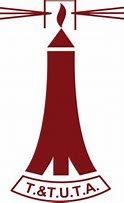History of SEA

AS PART of the admissions process for public secondary schools, the Secondary Entrance Assessment (SEA) has been aptly described as being a “very high-stakes” exam.
Consequently, it places enormous pressures on students, parents, and teachers.
In fact, even the Ministry of Education’s student support services division and many independent experts have expressed concern over the psychological impact this examination continues to place on students, such as engaging in self-harm, self-mutilation, and attempted suicide.
Many view this as completely unnecessary, given that this examination is simply about placing all students in a secondary school.
SEA was introduced in 2001 as an evolved version (some consider it a mere name change) of the older Common Entrance examination which was established in 1961.
However, the genesis of this examination is much older and given the perennial calls from many people for its replacement, given the advent of universal secondary education, which eliminated the supply/demand gap, it might be useful to understand its evolution and historical context.
According to Campbell, C (1992), formal, state-funded education began in 1851 under Lord Harris, who saw the need to establish a system of secular government schools called “ward” schools, paid for out of local (ward) rates.
These ward schools were intended to integrate the labouring class, bringing children of various cultural backgrounds together and teaching them English values.
It also mandated wardens to establish schools in their respective wards and that monies be allocated by the Treasury for the funding of these schools, thus ensuring for the first time that free elementary education was available to those attending government schools.
By 1858 there were 27 ward and denominational schools each. However, there was no similar mandate to expand the number of secondary schools to facilitate the continuation of educational pursuits from primary schools.
By 1869 there were only five single-sex secondary schools. These were mostly initiatives of denominational boards, except for Queen’s Collegiate College, which later became Queen’s Royal College (QRC), which was a government school.
Unlike the others, the government college did not take “boarders” since it was established to facilitate the children of the labouring class. In 1872 the coveted College Exhibition was introduced to regulate the number of students that could move from primary to secondary school owing to the limited number of spaces.
By the end of the 19th century, QRC and St Mary’s College, both of which were the only recipients of government grant funding, had a combined population of approximately 300 students.
The colony’s population was now approximately half a million, and there was increasing pressure for cheap secondary schools to meet increased demand from the working class.
With the introduction of Naparima College and St Joseph’s Convent (PoS) at the turn of the century, the combined student population of the four secondary schools numbered approximately 700 by 1916, while the elementary school system had an approximate enrollment of 50,000.
Unfortunately, the establishment of secondary schools did not keep place with the enrollment of primary schools. With increasing enrollment and higher quality in primary education, including the evolution of intermediate schools, the demand for secondary education kept increasing.
Scholarships were initially awarded annually to boys to attend QRC and St Mary’s College.
Gradually, as more secondary schools were built, the number of government scholarships increased so that by 1960 the State had been sponsoring 3,000 students annually.
By 1960, however, only about 20 per cent of the secondary school age population was enrolled in school, and this was of concern to the authorities.
There were also only 28 public secondary schools at the time, of which the government owned only two – QRC and St George’s College. In December 1960 the Concordat, a landmark agreement between the Roman Catholic Church and the government of TT, was signed.
To facilitate the articles within the Concordat the College Exhibition exam was replaced the following year by the Common Entrance examination.
The introduction of “modern” secondary schools during the decade of the 1960s and later junior/secondary schools in the 1970s helped to significantly expand educational opportunities to the working class.
These newly built government secondary schools opened secondary educational opportunities to the average citizen for the first time, in keeping with the government’s vision of education being a social equalizer.
Thus, the SEA and its previous incarnations were always attempts by the State to make secondary education accessible to the masses.
Now many argue this arrangement has outlived its purpose, and the focus should now be on equity and quality.


Comments
"History of SEA"